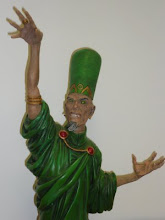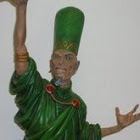
This is a very enjoyable sequel to Alpha: The Exchange, it would be nearly incomprehensible to anyone who had not read that book first. The story is picked up directly from where it left off in the last book and races to a very satisfying conclusion. Unlike the first book this one is packed with action all the way as the plot driven by the botched exchange from the first book continues to unwind. The Russian Government acts to assert itself after the attack it suffered, revenge is executed against the German gang who had tried to force their hand to recover their money. The Russian Mafia family are also concerned to find out who is plotting against them. On the run are CIA agent Alpha and his lover Assia, they are being hunted by Assia's husband and an unknown ally. The threads of the plot are cunningly twisted together and the truth about the exchange is revealed just ahead of a savage climax.
The cast are well written, even the minor players are imbued with a individual identity that ensures that the story never looses it bearings and descends into a simple shoot 'em up, there are always human actions driving the plot and believable agendas clash violently. The art is superb, the detail in each panel is extraordinary, they are never busy, they have a solid realism that adds great weight to the story. The cast are clearly differentiated and they move very nicely. This is an excellent action comic, written to take advantage of the structure of a comic.























